The Wilds is both a wildlife conservation center and a tourist attraction. From a tourist’s perspective, visiting The Wilds is like visiting a really, really big zoo. It sits on nearly 10,000 acres of land in rural, southeastern Ohio. Although the carnivorous animals at The Wilds live in fenced areas, most of the big, herd animals live in enclosures that are so large they don’t feel like enclosures at all. Instead of walking from one wildlife habitat to the next as you would at a traditional zoo, guests typically experience The Wilds while riding in a tour bus, although there are alternative means for getting around.
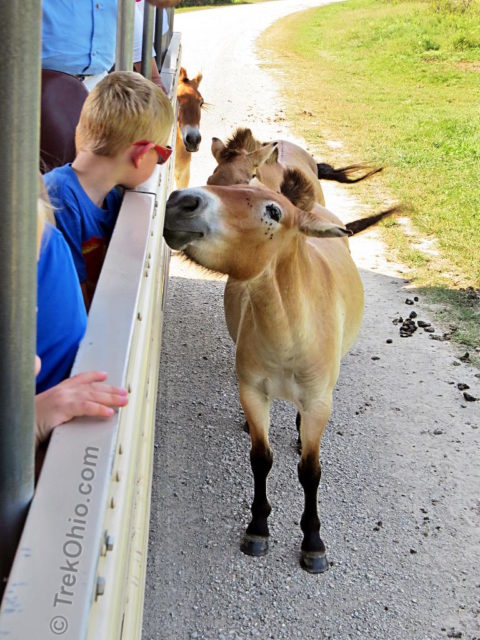
Just to give you some idea of the open expanse, here are a few shots from a distance that show the lay of the land.
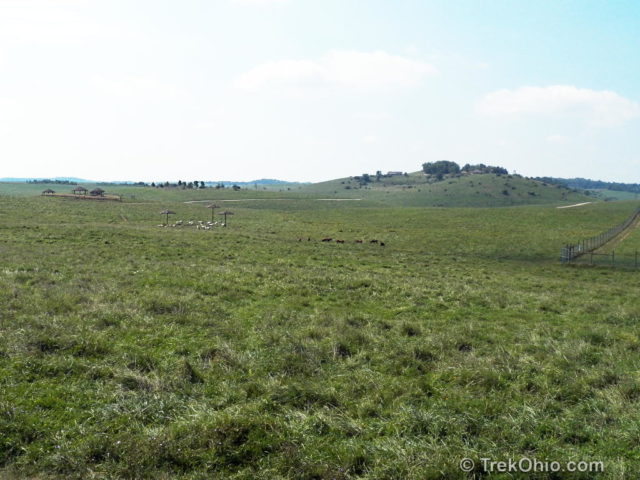
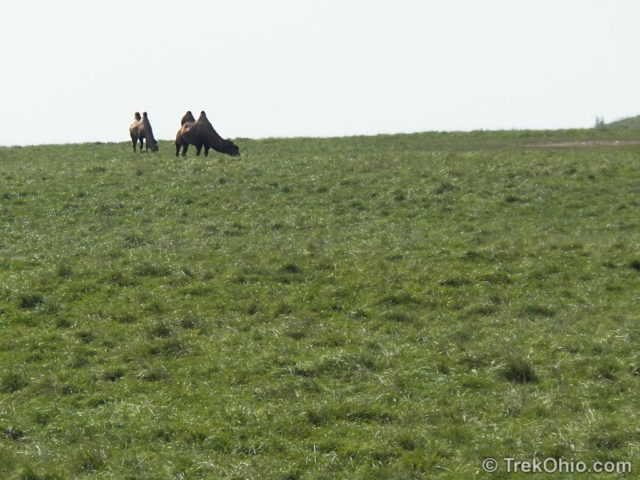
Although there are areas with trees, the vast majority of the land is pasture. This conservation center is situated over reclaimed mining land. Due to its mining-history, much of the land has a shallow layer of top soil that would prevent trees from sending down deep roots. However to provide the herd animals sanctuary from the sun during the dog-days of summer, a variety of shade-providing structures have been erected for the animals.
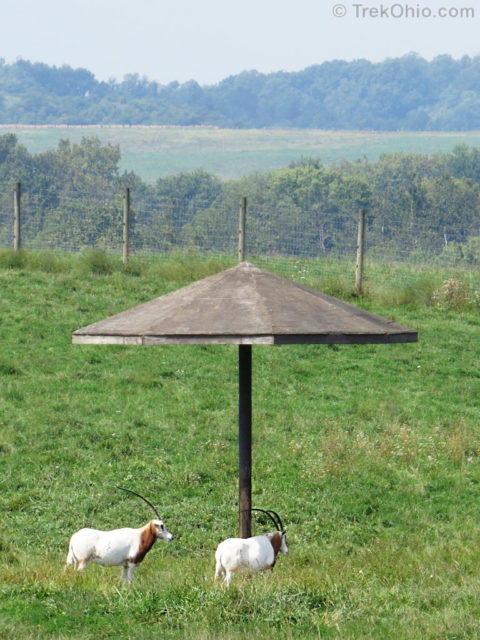
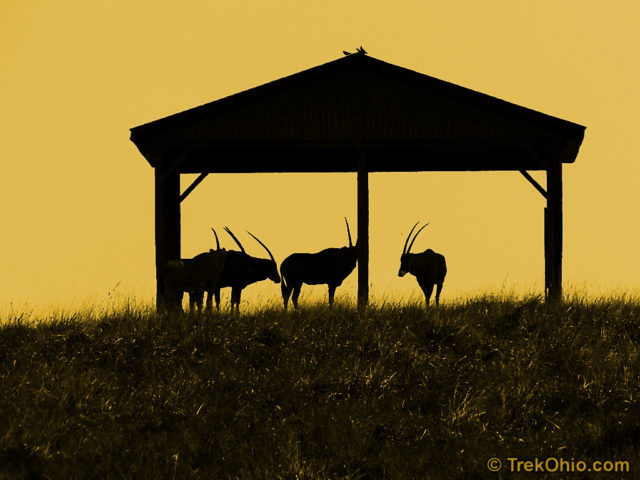
The terrain at The Wilds is rolling hills and valleys with lakes nestled in many of the valleys. I can’t remember the exact number of lakes, but it was well over 100.
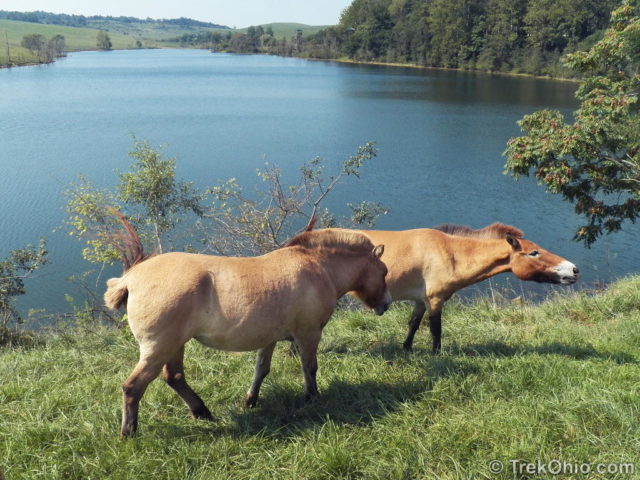
The horses pictured above are rare, Mongolian horses. They belong to the only species of truly wild horses in the world today. Genghis Khan tried to domesticate this species and failed. Other wild horses, such as the Mustang, are really feral horses — horses that were domesticated, but which later escaped into the wild.
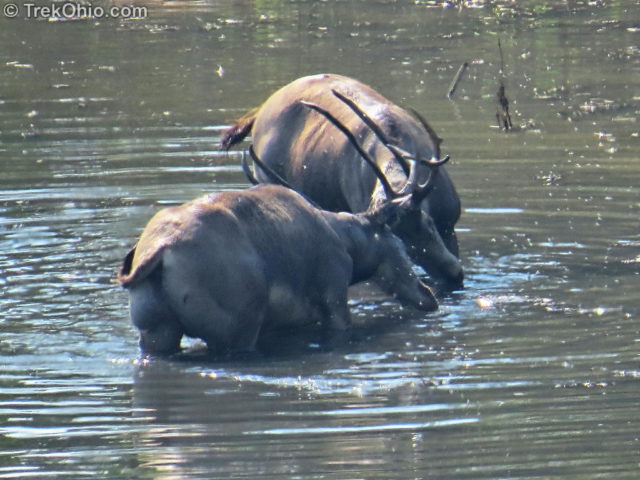
The two bucks above are Père David’s Deer. I’m going to provide a bit of background information about this species because knowing this helps you to understand the kind of conservation work that’s being done at The Wilds.
Père David’s Deer became known to the West in 1866 when a French missionary became aware of them; in the West, this species has been named after this priest. At that time all surviving members of this deer species lived within a walled hunting garden belonging to the emperor of China. Nonetheless some of these deer were essentially stolen from the emperor and transported to Europe. In hindsight this worked out because the deer were about to become extinct in their native land. A flood breached the garden wall containing the deer and all but 30 of the deer escaped the garden. Since the peasants in the surrounding area were starving, the escaped deer were soon killed and eaten. Then in 19oo during the Boxer Rebellion, troops were quartered at the royal garden; they shot and ate the remaining deer.
The captive deer in the West have gradually expanded in number in conservation centers such as the one at The Wilds. Père David’s Deer have been gradually reintroduced to China where they live in special reserves.
Interestingly an informal name for the deer in China is sibuxiang which can be translated as meaning “like none of the four”. That’s because four features of the deer are supposed to be reminiscent of other animals without the deer being that animal. For instance Père David’s Deer have a tail like a donkey, but they are not donkeys. They have hooves like cows, but they are not cows, etc.
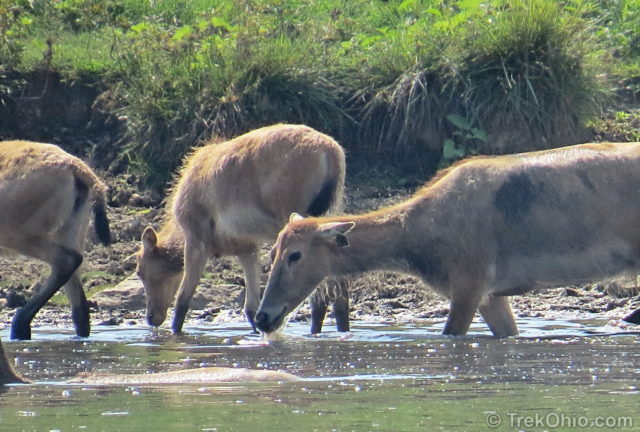
Because the animals have large enclosures there is a certain element of luck as to which ones will be close enough for visitors to get a good look at them.
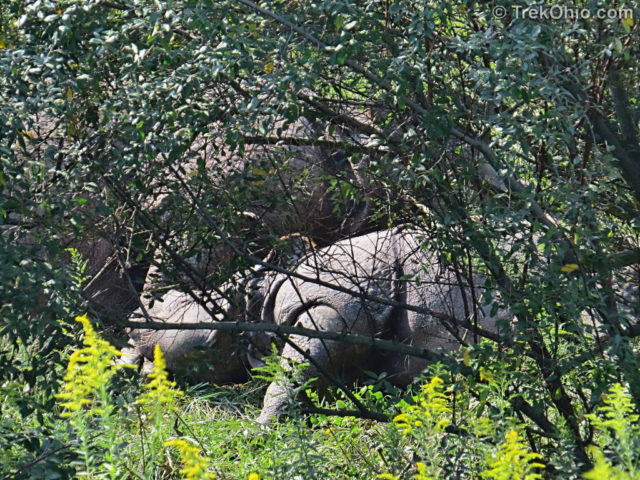
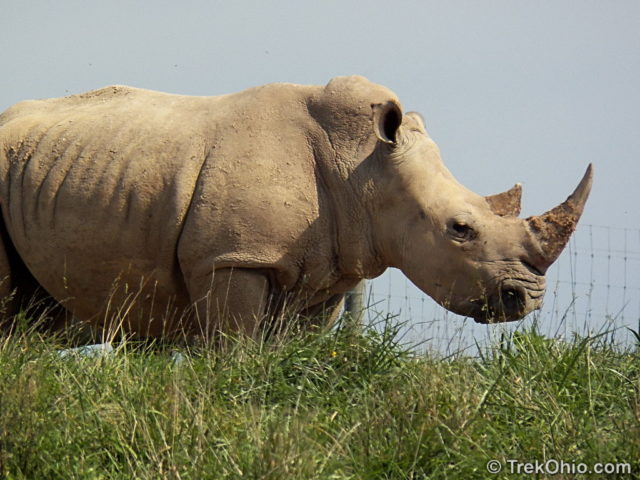
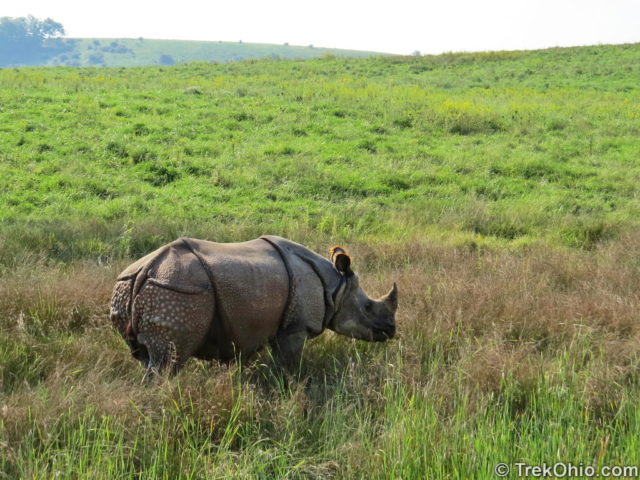
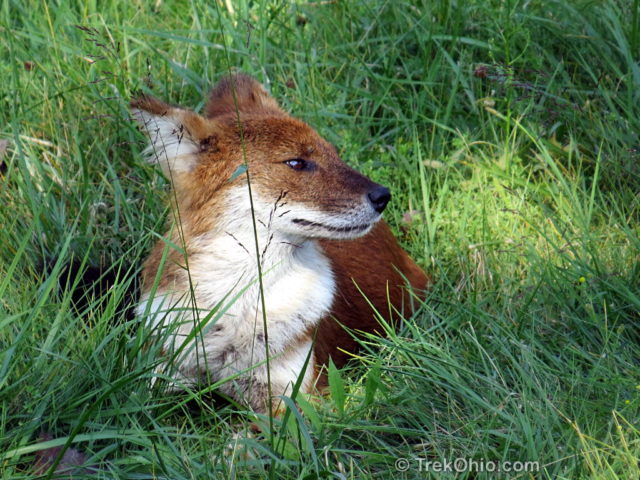
The animal resembling a fox pictured above is a dhole. Our tour guide told us that the ones at The Wilds were about 35 lb (15.9 kg); according to Wikipedia they may range in weight from 22 to 55 lb (10 to 25 kg). I mention the weight because our tour guide also told us that in their native habitat of southeast Asia, they prey upon the banteng which weighs between 880 to 2000 lb (400 to 900 kg). Of course dhole must hunt in packs to be able to pull off such a feat, but I still thought that was remarkable. I looked into this more when I got home, and I discovered that in Indonesia conservationists felt they had to reduce the size of the dhole packs to preserve the banteng. This was an exceeding difficult choice to make because both are endangered species.
Besides hunting banteng, packs of dhole will also attack their fellow predators, either to reduce competition, or because the other predator will kill them if the opportunity presents itself. Large packs of dhole can kill tigers, leopards, Asiatic black bears, and sloth bears.
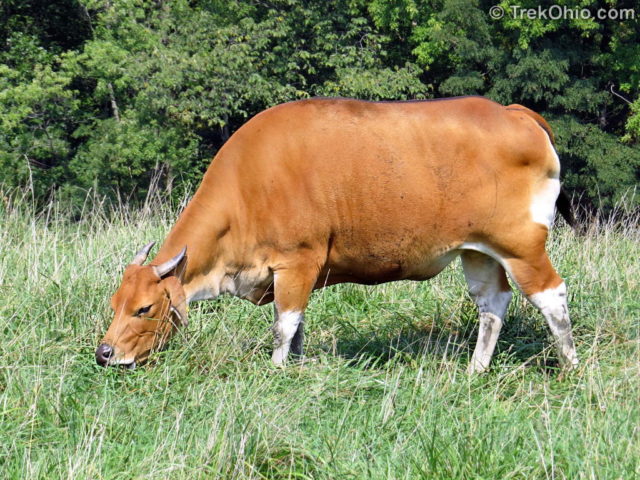
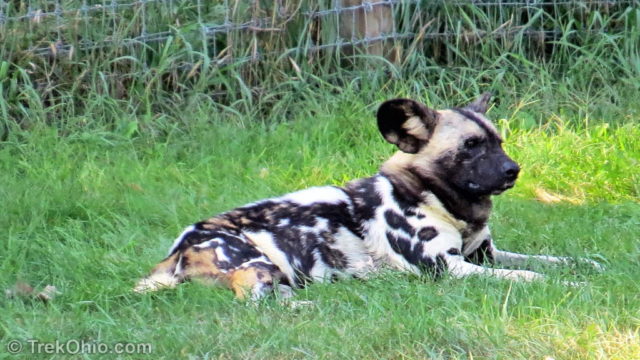
Both the African Wild Dog and the Dhole allow their pups to eat from the kill first. Most wild canines require the pups to wait until the adults are done eating.
The African Wild Dog below was rolling around on his back much like a domesticated dog would do. 🙂
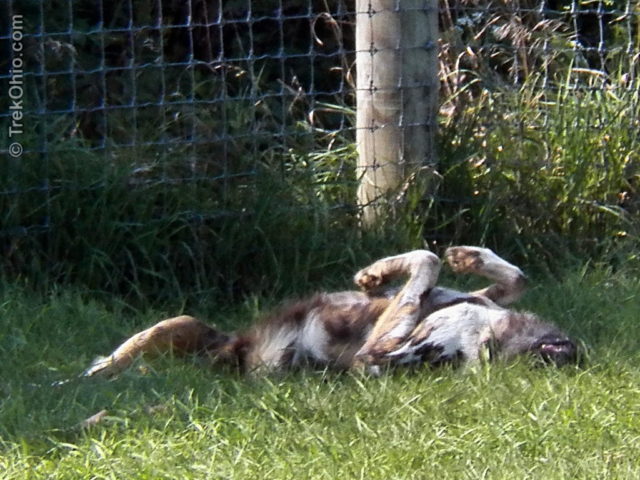
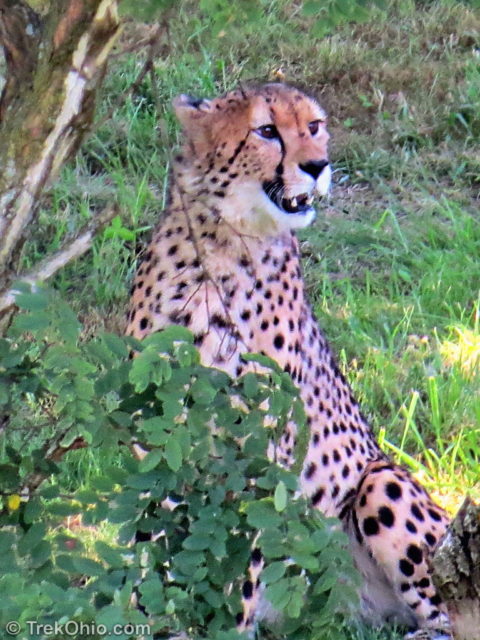
Although well-fed by the park naturalists, occasionally a native rabbit or groundhog makes its way into the cheetahs’ enclosure… great fun for the cheetahs!
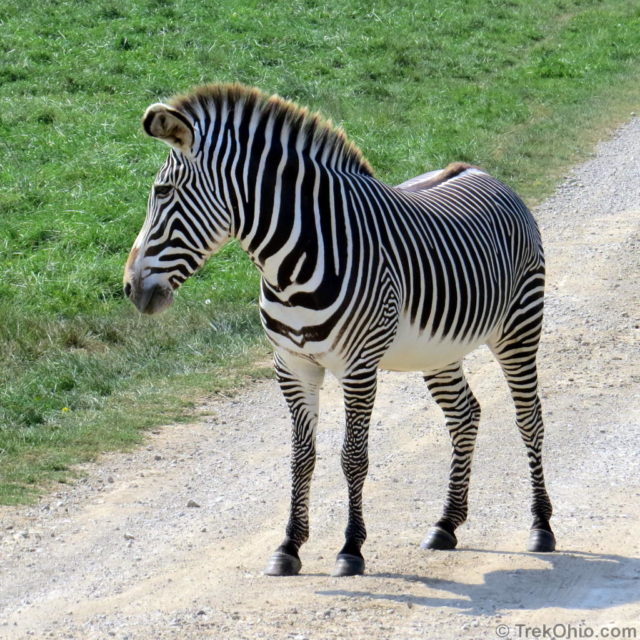
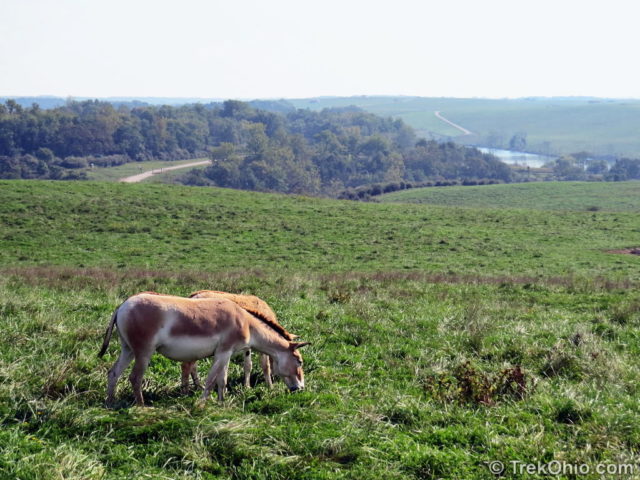
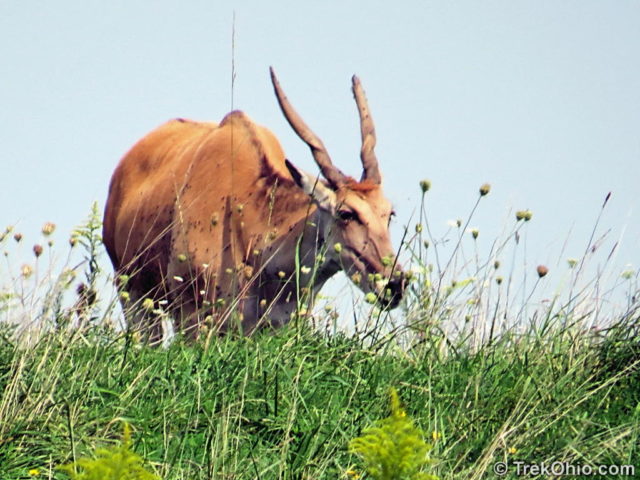
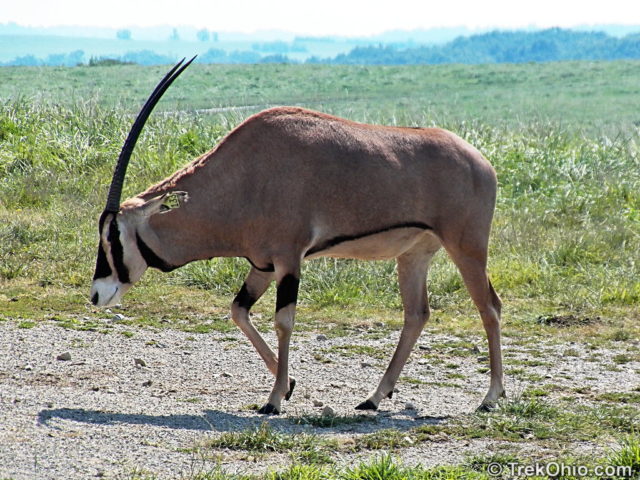
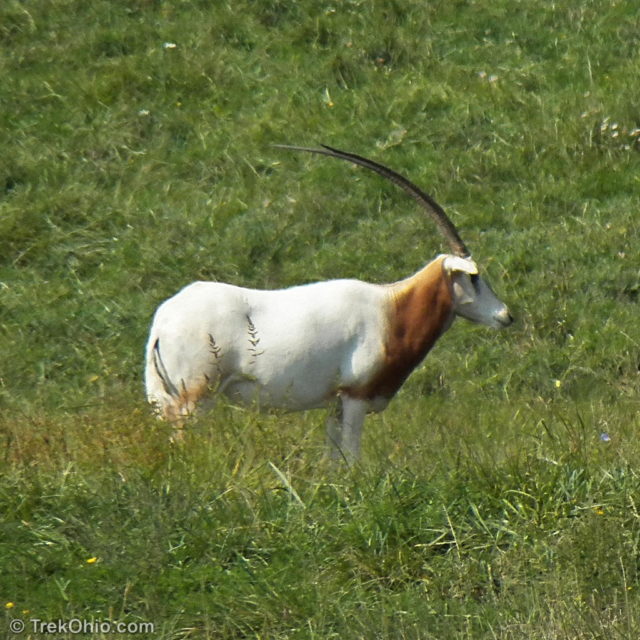
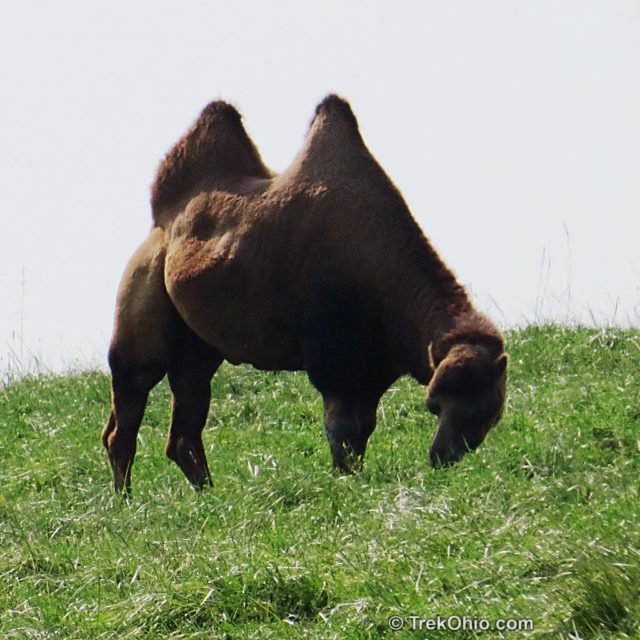
There are a number of different ways of touring The Wilds. We decided to go with the Open-air safari because no glass lies between the guests and the animals (great for picture-taking!). Also since the days are getting cooler, air conditioning isn’t as appealing as it might be during the middle of summer. The Wilds will remain open daily throughout the rest of September, and then it will be open on weekends through the month of October. Because of the cooler weather, I think this is a great time to go.
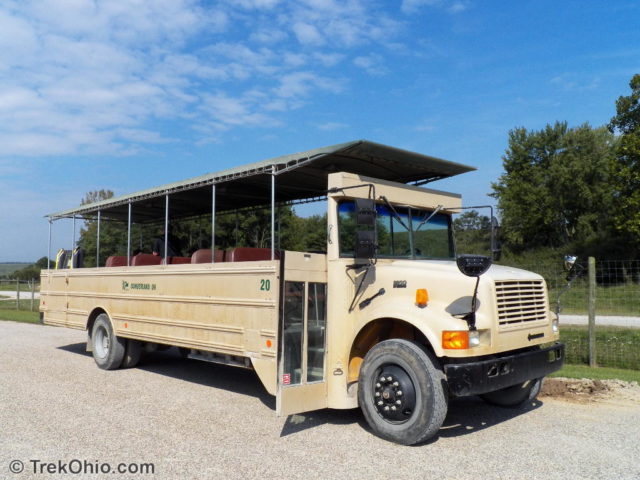
If riding around on a bus seems too passive for you, it is also possible to arrange for tours that involve ziplines, horseback riding, and fishing. For those who would like to spend the night, there is a lodge and a number of deluxe yurts on the premises. I thought that the yurts seemed a little pricey, but the money does go toward their conservation efforts, so maybe that’s the way to rationalize the price.
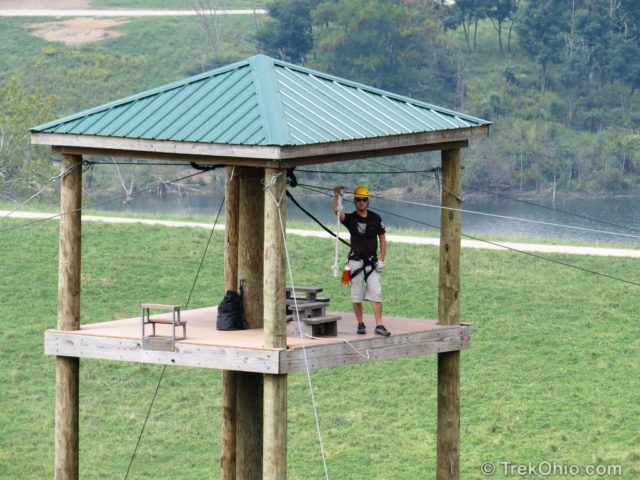
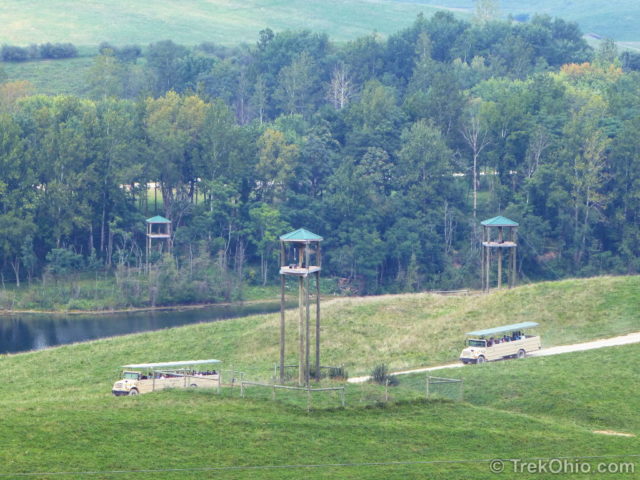
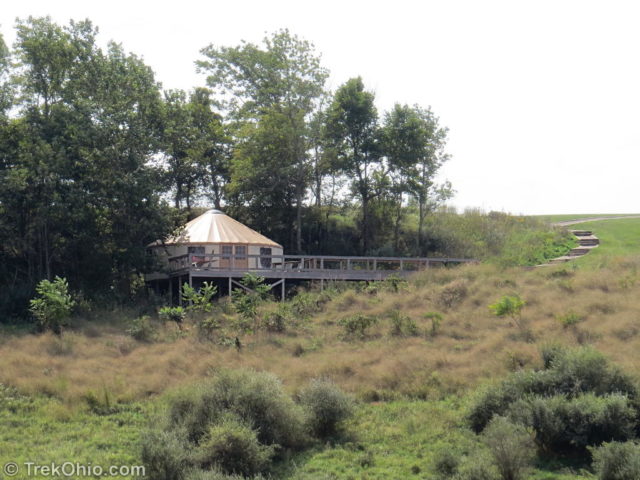
If you are curious what the inside of the yurt looks like, here’s a link to a photo The Wilds published on their Facebook page.
The tour buses, the Johnson Visitor Center, the Overlook Café and the Gift Market are all wheelchair accessible.
Additional information
- Official site: TheWilds.org
- Facebook: the Wilds – if you’d like to see more photos of the animals at The Wilds, this is the place to go. The official site doesn’t publish many photos, and the ones that they do publish are all small.
- The Wilds is located in both Muskingum and Noble counties. Check out our page for either of these counties for basic information about The Wilds and for information on nearby parks and preserves.
- Wikipedia: Père David’s deer – the Chinese deer species pictured in this post.
- Wikipedia: Banteng – Cow-like animal pictured in this post.
- Wikipedia: Dhole – fox-like creature that preys upon the Banteng.
- Evidence of Banteng (Bos javanicus) Decline in Baluran National Park, Indonesia – Excerpt from abstract:
The data suggested that high predation rate by dholes was the responsible factor of population decline [of banteng]. However, an action to reduce dholes in BNP was an agony of choice, because both banteng and dhole were classified as endangered species. A reduction of pack size of dholes was the best remaining option to prevent banteng from extinction. If the pack size of dholes was small enough, they would switch to prey the smaller animals.
Location
The Wilds is located at 14000 International Road, Cumberland, OH 43732. Traveling there from central Ohio, I thought that we’d get off the freeway, and it would be a straight shot to The Wilds. The truth is that after getting off the freeway there’s still quite a bit of navigating to do. You can get directions from Google by clicking on “View Larger Map” under the embedded map below, or like us you could use GPS.
Discounts
The Wilds has a reciprocating membership deal with a number of zoos that will let you purchase a Safari Transport Pass at a discount (that’s the ride in the closed, air-conditioned bus). Since we wanted to go on the Open-Air Safari, the discount didn’t apply to our tour. I’ve also heard that there is a AAA discount, so if you have that AAA membership it wouldn’t hurt to ask about that when you arrive.